TechRadar Verdict
The IronWolf Pro 30 TB fits standard 3½-inch bays and can be configured in your NAS or PC as you need. Tested with a UGREEN NAS and coupled with another 30 TB drive, it performed exceptionally well with decent monitoring and compatibility.
Pros
- +
Huge capacity
- +
Health management insurance for systems
- +
Trusted brand reliability
Cons
- -
Expensive
- -
Health management not integrated with all NAS systems
Why you can trust TechRadar
Seagate IronWolf Pro 30TB HDD: 30-second review
An initial look at the Seagate high capacity HDD range can be a little confusing, with two almost identical products, the Exos Mozaic 3+ M 30TB HDD and the Seagate IronWolf Pro 30 TB, both offering very similar hardware and capacities but with a few distinct differences.
In this review, I'm looking into IronWolf and why this drive is recommended for home and small office use as a NAS systems solution. It's not that the IronWolf is more reliable than the Exos version, but there are greater safeguards for integrity built into the firmware, making it better for self-managed systems. This firmware, IronWolf Health Management (IHM), enables it to communicate with certain NAS systems OSs to relay information about the health of the drive.
In this review, I've installed the IronWolf firstly into a desktop machine to test its speed and reliability in isolation before moving it over to a Ugreen NASync DXP4800 Plus and coupled it with an Exos drive.
Overall, the performance was exceptionally good and that 30TB of capacity as a drive on its own is extremely spacious, enabling you to back up or archive plenty of work documents, images and video securely.
Obviously, when you're running this scale of data, having a NAS is the ideal option to ensure that you're not going to lose any data if the unimaginable happens and your drive does go down.
Getting started with the drive inside my desktop machine based around the ASUS PRIME Z890-P WIFI motherboard running an Intel Core Ultra 7 CPU, the drive was instantly recognised within drive management and reformatted into the NTFS file system. From then on, the performance was good, matching if not exceeding other HDDs that I have installed, with one notable difference being that the drive was accessible faster than some of my older hard drives.
Switching over and installing into the UGreen NASync DXP4800 Plus, of which the IronWolf hard drives are actually one of the drives that the company suggests, the support for the IHM (IronWolf Health Management) system integrates fully with UGreen NAS and includes smart diagnostic tools that monitor the drive's health in the background.
Sign up to the TechRadar Pro newsletter to get all the top news, opinion, features and guidance your business needs to succeed!
Whilst there's nothing to specifically say that integration is happening on drives that aren't compatible with this type of integration, you don't get the depth of insight that you do with the IronWolf, showing it's a great option for the UGREEN systems. It should also be fully compatible with TerraMaster and Asustor NAS as well, with full details listed on the NAS manufacturer's websites under the suggested storage solutions.
At the end of the test, I was, of course, impressed with the huge compatibility that the drive had across multiple devices, being used as a standalone within a desktop machine, as well as being partnered with an Exos Mozaic 3+ in the UGreen NASync DXP4800 Plus system.
If you're looking for a potential extremely high-capacity NAS hard drive for your home or office, then the IronWolf Pro 30 TB version is a great option, although I do consider that at the cost per unit, you are going to be looking at a considerable outlay for a standard four-disk array.
Seagate IronWolf Pro 30TB: Price and availability
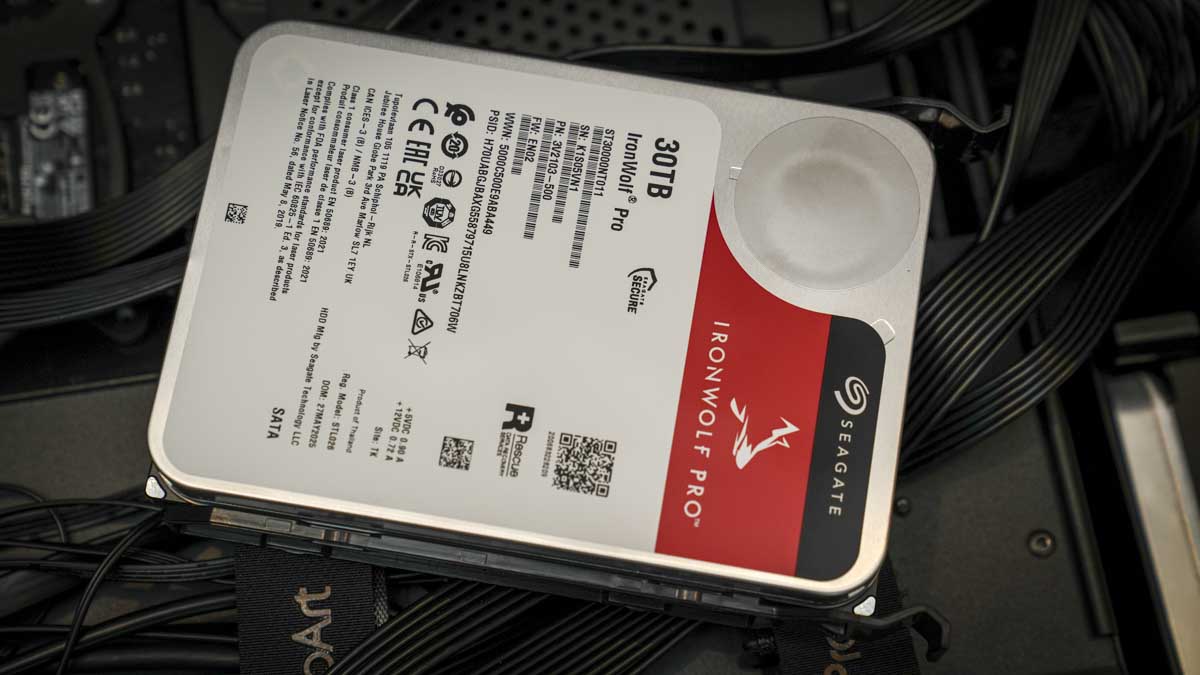
- How much does it cost? $670 / £750
- When is it out? Now
- Where can you get it? Widely available
As this HDD is one of the best-known compatible drives on the market, it will be widely available with an estimated street price of around $670 / £750, meaning that if you want to fill the UGreen NAS with a full four drives, you will be looking at around US$3000 / £3000.
- Value: 5 / 5
Seagate IronWolf Pro 30 TB: Design
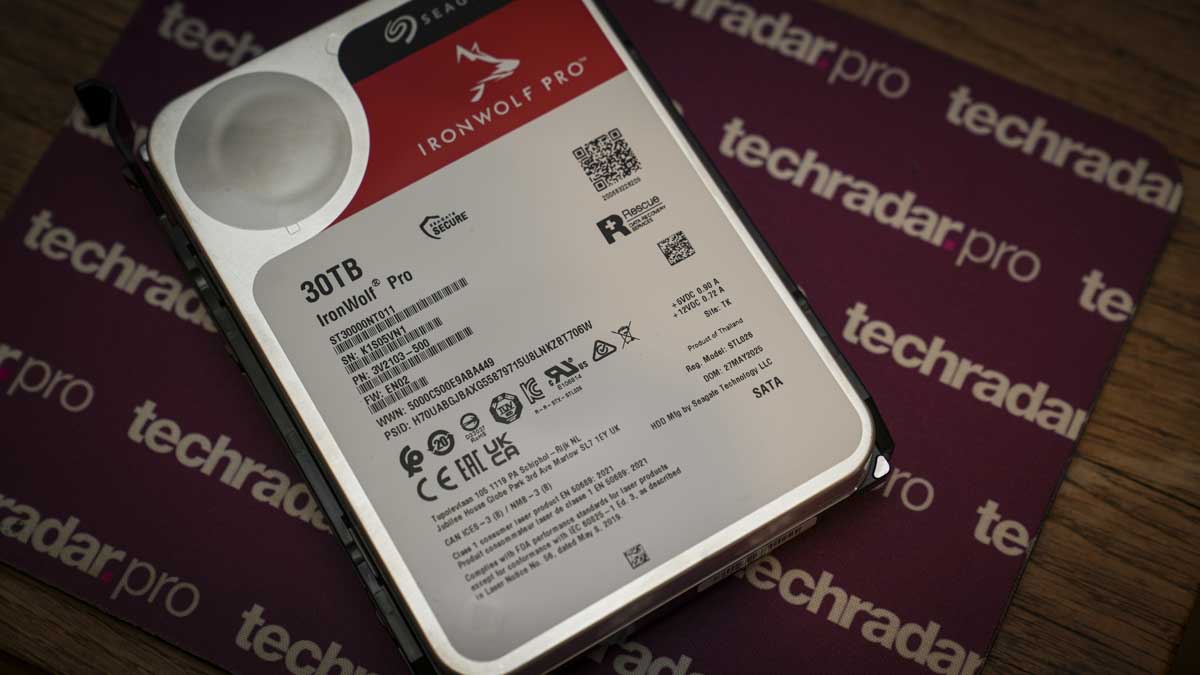
Form Factor: 3.5-inch
Capacity: 30 TB
Interface: SATA 6 Gb/s
Spindle Speed: 7200 RPM
Cache: 512 MB
Sustained Transfer Rate: Up to 285 MB/s
Workload Rate Limit: 550 TB/year
Mean Time Between Failures (MTBF): 2.5 million hours
Supported Bays: Up to 24-bay NAS systems
Warranty: 5-year limited warranty
Rescue Data Recovery: 3-year included
Features: IronWolf Health Management, AgileArray, CMR technology, Rotational Vibration Sensors, Hot-swap support
Dimensions: 26.11 mm x 101.85 mm x 146.99 mm
Weight: 695 g
The Seagate IronWolf Pro follows the standard tried and tested 3.5-inch HDD form factor and has been specifically designed for 24/7 use, offering reliability in home and office NAS systems. While 30 TB is the largest of the capacities for this particular model, there are plenty of other options running from 2 TB all the way through to this largest capacity that I'm looking at in this review.
As the IronWolf follows the standard dimensions, it measures 26.11 mm x 101.85 mm x 146.99 mm, so it will fit into almost any NAS system that you want. when it comes to weight, due to the number of platters within the drive, it is relatively heavy at 695 g, so a fully loaded NAS system is going to be rather weighty.
Seagate, with years of experience, has essentially created an HDD that has been optimised for multi-bay NAS systems and has firmware with the IronWolf health management software built in that integrates with many NAS OSs so that drive health monitoring can be seen through the NAS software, in the case of this review, that is the UGreen NASync DXP4800 Plus and the UGOS software.
The drive mechanics incorporate vibration sensors, low power and heat output sensors, and general attention to the build quality that ensures this drive runs quietly, even compared with other Seagate drives.
Physically, it features all the usual screw holes that you need to mount this within a caddy system into the NAS, and when it comes to data connectors, it features SATA 6 Gb/s data connector and SATA 15-pin power connector, so should easily fit into almost any consumer NAS model.
- Design: 4.5 / 5
Seagate IronWolf Pro 30TB: Features
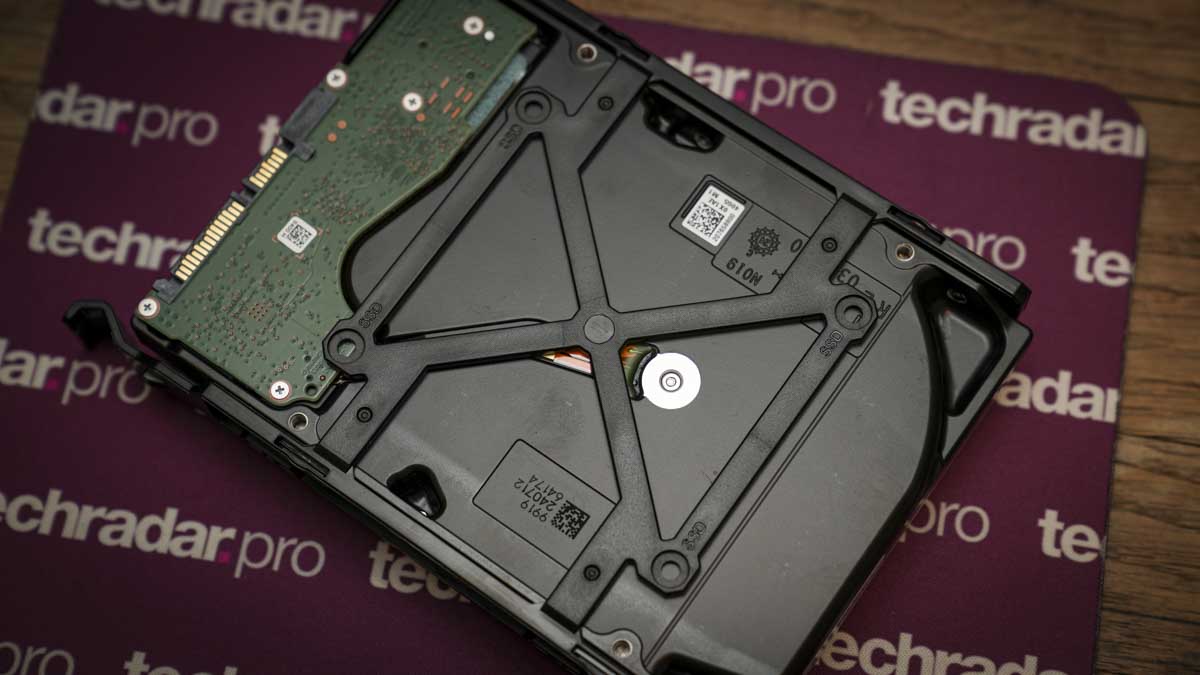
Taking a look at the feature set of the IronWolf Pro 30 TB and it these highlight that it's been designed for home and small office use. So if you are a small video or photographic studio, then this scale of capacity is going to be extremely valuable and even for other business uses; just having that amount of data storage that you can configure and manage yourself on a UGreen NASync DXP4800 Plus, Synology or QNAP NAS system has to be very appealing.
While the 30TB version is rather expensive, and for a basic NAS setup you're going to need at least four, the cost could be slightly prohibitive, but with versions of this drive starting at 2 TB, for a lot less money and ranging all the way through to the massive 30 TB, there's plenty of options depending on your budget and you can always buy a lower capacity option, then upgrade in the future.
A nice feature is that the drive supports hot-swapping, so if a drive does go down in your NAS system and your NAS system also supports hot-swapping, then you don't need to power down the machine, just remove the drive, pop in a new one and hopefully that drive will then safely re-populate.
When it comes to the technology behind the drive, it uses all CMR (conventional magnetic recording), and as this has been around for a long time, it's a tried and tested technology, so whilst it might not be the fastest, it's certainly known for reliability.
When it comes to reliability, as all the technology is well tested, Seagate states that it's good for up to 550 TB a year workload rating, which is about 2.5 million hours of MTBF, and it comes with a five-year limited warranty, which gives you peace of mind. Further reinforcing just how confident Seagate are about the reliability of this drive, they have bundled a complementary three-year licence and Rescue Data Recovery with the cost, and the software, from personal experience, is very good at recovering data from damaged drives.
One of the features that I've already spoken about is the IronWolf health management. This is integrated into the drive but needs other software in order to communicate. It's basically a link to your NAS system software from the drive and enables your NAS system software, in the case of the UGreen option, that's UGreen UGOS, where, under the health option, you can see just how well the drive is doing.
One of the other big features of the design of the drive is that it has been optimised for NAS and uses an AgileArray with workload balancing. This essentially offers time-limited error recovery (TLER) and rotational vibration (RV) sensors, which all help deliver reliable performance in most multi-bay environments.
- Features: 4.5 / 5
Seagate IronWolf Pro 30TB: Performance
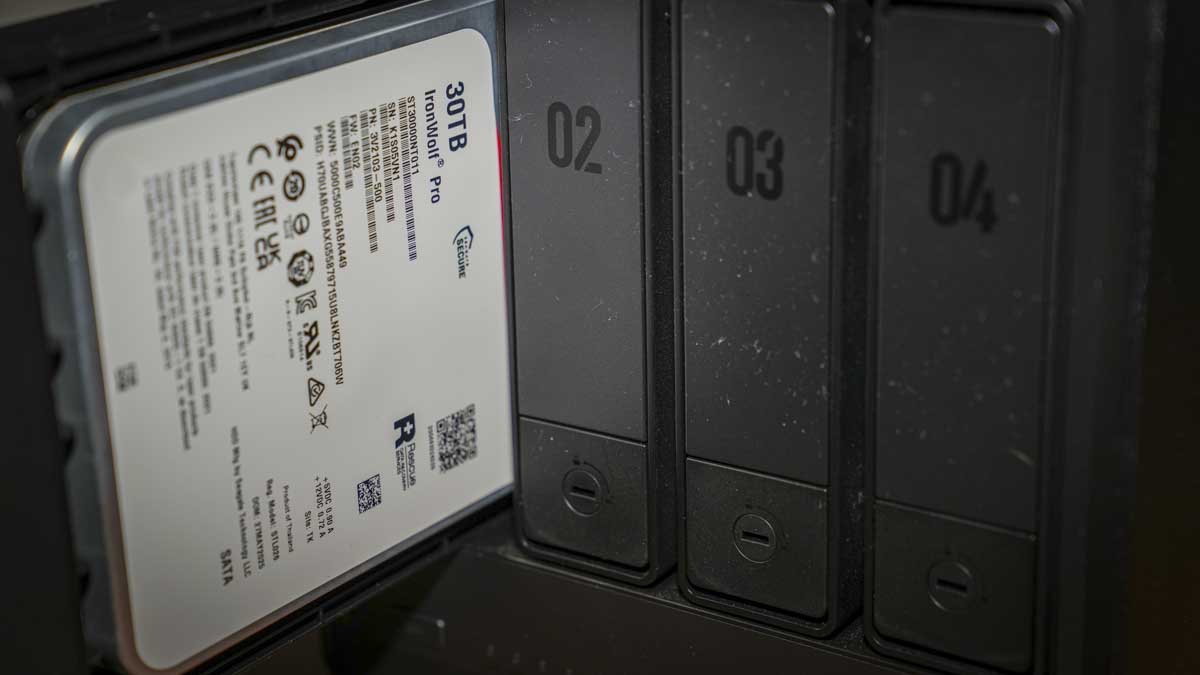
Tested on an ASUS Prime z890-p motherboard
Crystal Disk Mark Read: 273.37 MB/s
Crystal Disk Mark Write: 278.53 MB/s
AJA System Test Lite Read: 237 MB/s
AJA System Test Lite Write: 232 MB/s
AS SSD Benchmark Read: 271.08 MB/s
AS SSD Benchmark Write: 261.45 MB/s
ATTO Disk Benchmark Read: 287.64 MB/s
ATTO Disk Benchmark Write: 272.34 MB/s
In this test, I approached the IronWolf Pro 30TB in two different ways. The first was just to install it into a desktop machine and utilise it as a large capacity drive within my desktop video editing machine that's based on the ASUS PRIME Z890-P WIFI motherboard with Intel Core Ultra 7 CPU. After right-clicking on the Windows icon, selecting drive manager and reformatting the drive into the NTFS format, the drive was ready to use. Although speeds aren't huge compared with your average SSD, at over 200 Mb per second, it was absolutely fine for video and image data.
One thing that impressed me was the access speed of this HDD was far faster than some of my other large-capacity HDDs. Whilst it wasn't instantly ready as an SSD is when it's on standby, the speed of access to the drive was still impressive. Likewise, the transfer rates, as highlighted in the benchmarking tests, show once the disc is active, it could actually be perfectly well used for the likes of Lightroom and Photoshop as a working drive, and although those transfer speeds might seem relatively slow in comparison with the SSDs of today, in reality for this type of work, this speed is still more than adequate.
In the next test, and as part of the Seagate Exos Mozaic 3+ test, I created a SoftRAID within my desktop machine using the two drives, and they worked perfectly together, creating a fast RAID 0 internally in my machine and, to be honest, if you want to cut out the need for a large RAID system and just want something very simple, then this approach actually works surprisingly well.
Switching over and popping the two drives into the UGreen NASync DXP4800 Plus and using the OS to initiate the two drives, as the capacity of the two sets of drives was different, I had to separate them as different pools, with one of the 30 TB drives in one pool and the two 8 TB drive in the other. In this situation, the drives were perfectly providing huge amounts of capacity and also that peace of mind that the data was secured on a RAID system, so if there was a drive failure, then I wouldn't lose all that data.
Accessing the NAS was always fast, although not quite at a network working standard; I have no doubt that for large-scale archiving, this drive would definitely keep up with the pace. Also, the ability to log on and actually be able to monitor the health of the drive is also a huge advantage, and this was all done through the UGreen NAS UGOS, which I find is an easy option.
Used both as a standalone high-capacity HDD within a desktop machine and also as its intended use possible for NAS, the IronWolf Pro 30 TB capacity HDD really stands out as a decent option, but what reinforces this reliability for me is the integration of the health firmware with compatible NAS systems that would make me look at this as a viable option for upgrading my own NAS System.
- Performance: 5 / 5
Seagate IronWolf Pro 30TB: Final verdict
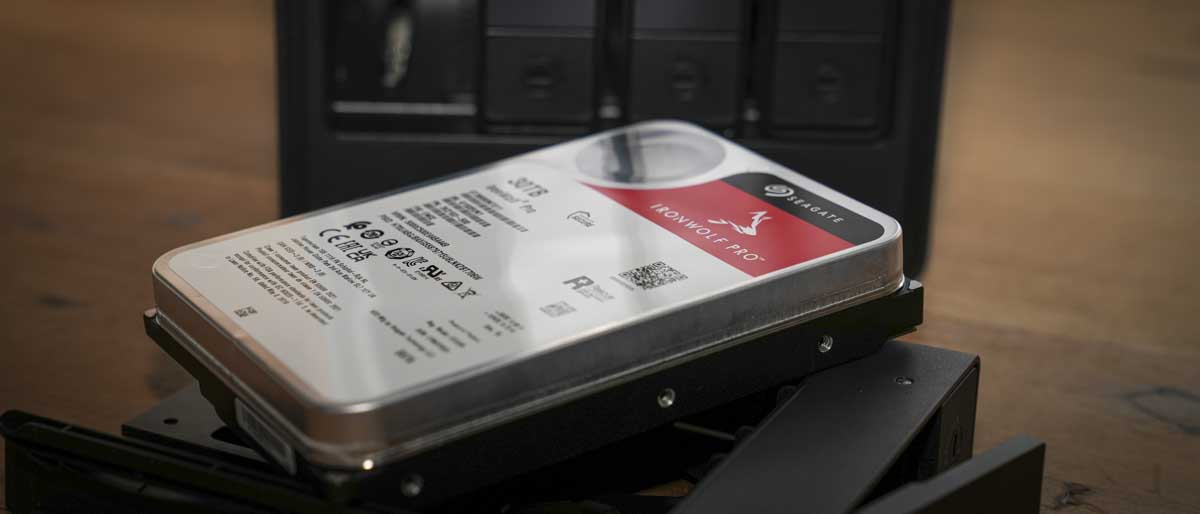
If you run a small office and don't have an IT department to rely on, then an option like the IronWolf Pro HDD is a great choice and gives you just a little bit of extra feedback that's important over the Exos Mozaic 3+ 30 TB drive that I've also tested.
While the Exos Mozaic 3+ is excellent, it is more designed for high-end enterprise situations so compared to the IronWolf Pro, it doesn't feature some of those health checks the smaller systems that are self-managed would need.
Should I buy a Seagate IronWolf Pro 30TB?
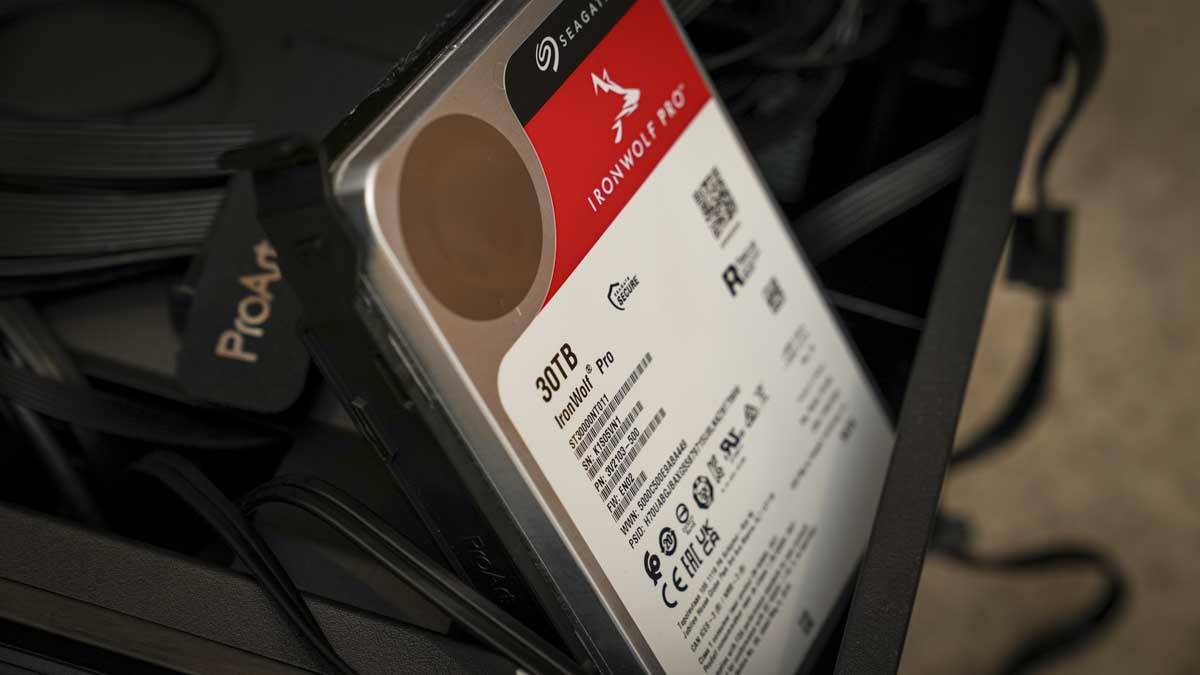
Value | Any way you look at it, the 30 TB capacity is expensive, but if you need that capacity, then this is the price you're going to have to pay | 5 |
Design | Meeting the needs of a 3½-inch HDD, the IronWolf Pro has been designed to be as compatible as possible | 4.5 |
Features | Ample capacity options, tried and tested technology and firmware that communicates with certain NAS systems give it a feature set tailored for self-managed NAS systems | 4.5 |
Performance | The feature set really aims this towards NAS systems, and with the IHM firmware integrating with NAS OS systems, it's a good all-round performer | 5 |
Overall | If you're looking to fully kit out a new NAS, then this is a good drive to go for with a progression from 2 TB through to this 30 TB option | 5 |
Buy it if...
You have a home NAS
If you have a home NAS, then check to see if IHM is compatible with your device, in which case, this is a high-capacity HDD that should give you years of use.
You need huge amounts of storage.
If you think of a basic four-bay NAS system with four of these, then you potentially have 120 TB of capacity, and even at its minimum, you still have 60 TB, which is more than enough for most small offices.
Don't buy it if...
You need speed
This is, after all, just an HDD, so if you need fast access to high-capacity storage, then you're going to have to look at an SSD. Just keep in mind that at present, you can't buy SSDs at this capacity, and anyway you look at it, an SSD of 30 TB is going to be hugely expensive.
You're on a budget
The 30 TB version is expensive, and when you consider that this is designed for working in a NAS system, so you're likely to want at least four, that cost does quickly escalate. However, with capacity starting at 2 TB, you can start and upgrade as you need.
For more high-end storage solutions, we've also reviewed the best NAS devices around.
Alastair is a photographer, filmmaker and tech writer who has been working in the publishing industry since the late 1990s. For more than 25 years he has covered photography, video and technology across Future's photography, technology and gaming brands. He runs a photography and video production company and lectures in TV and film. He can usually be found testing mini PCs or prototyping and prop building with the aid of 3D printing.
You must confirm your public display name before commenting
Please logout and then login again, you will then be prompted to enter your display name.